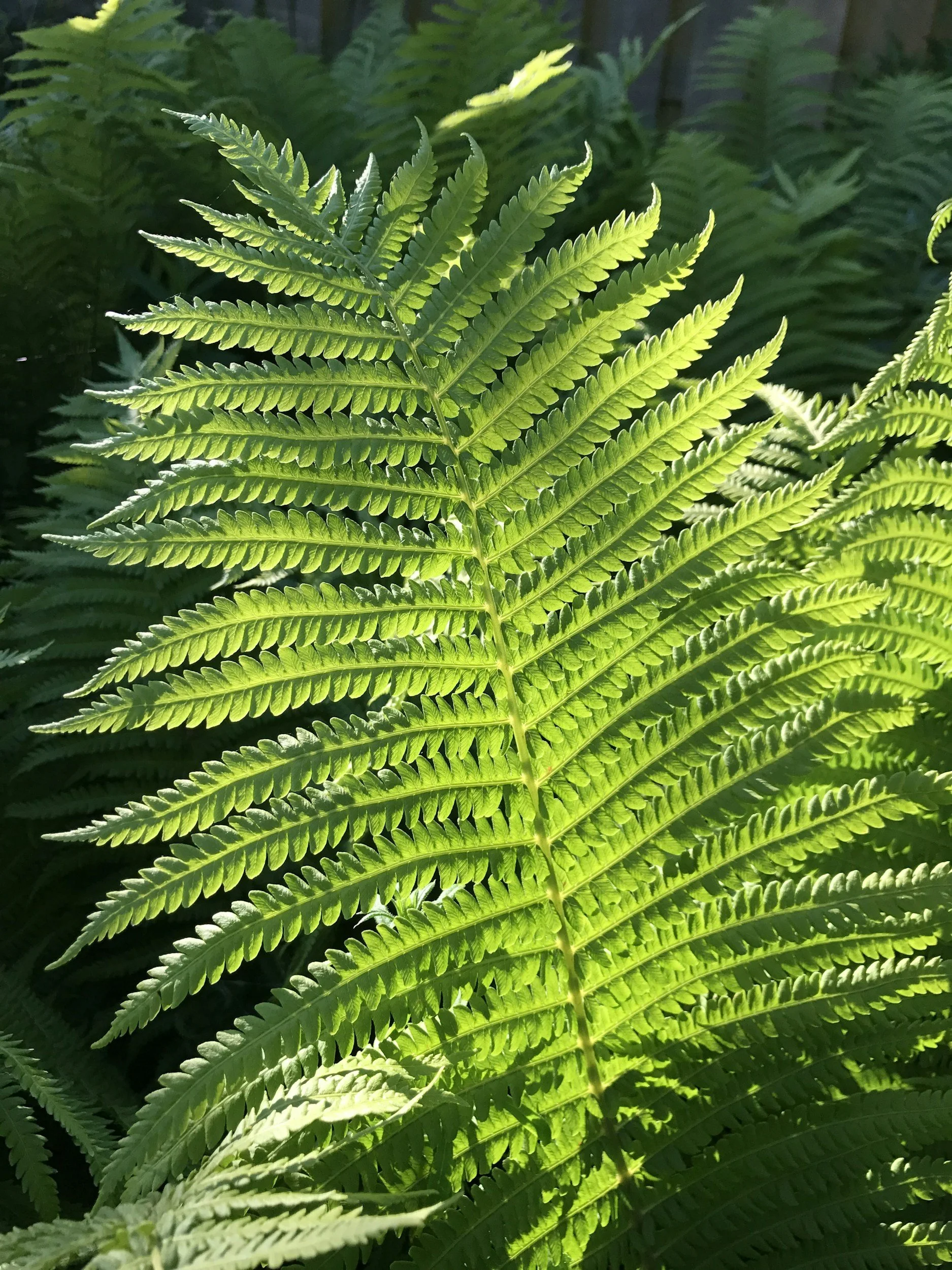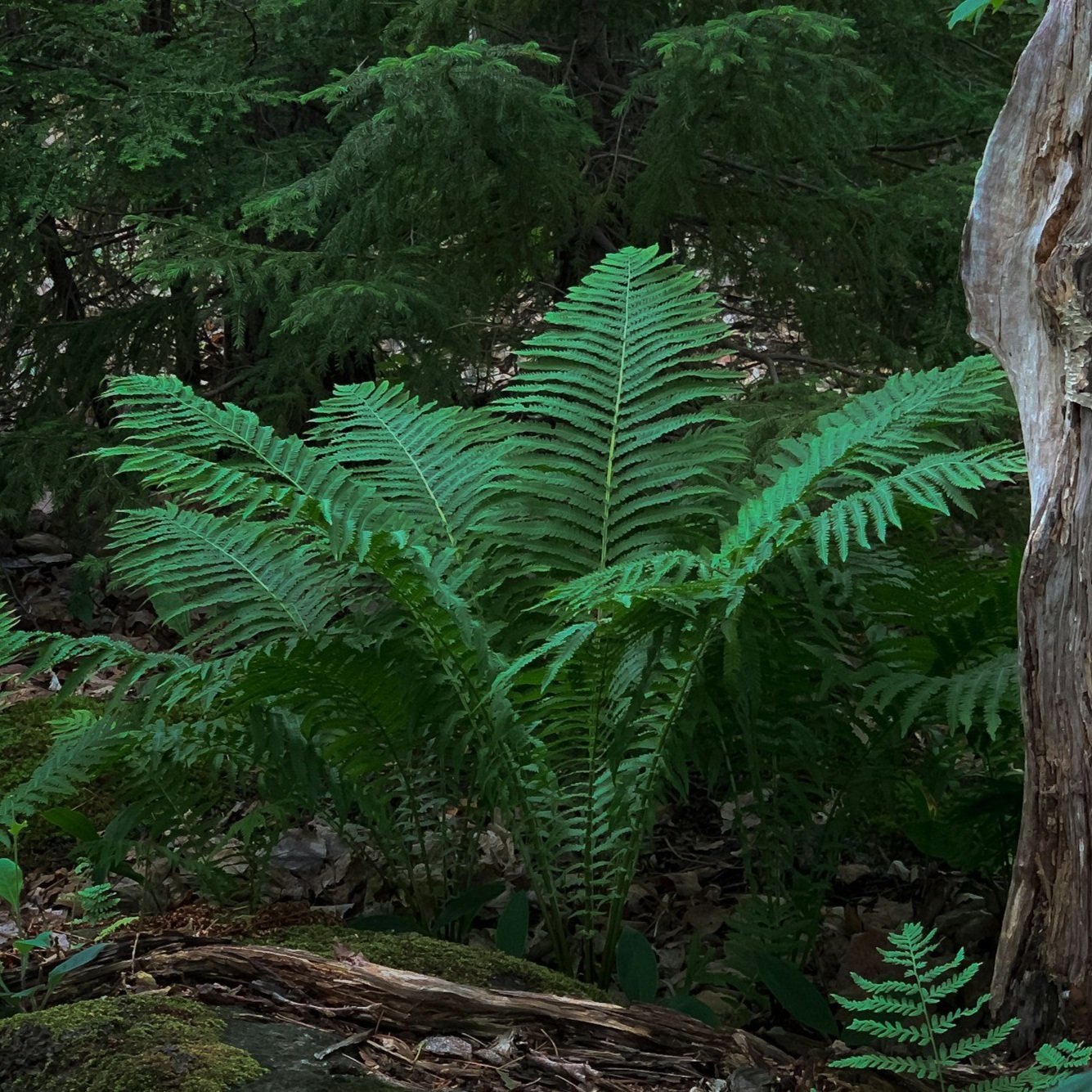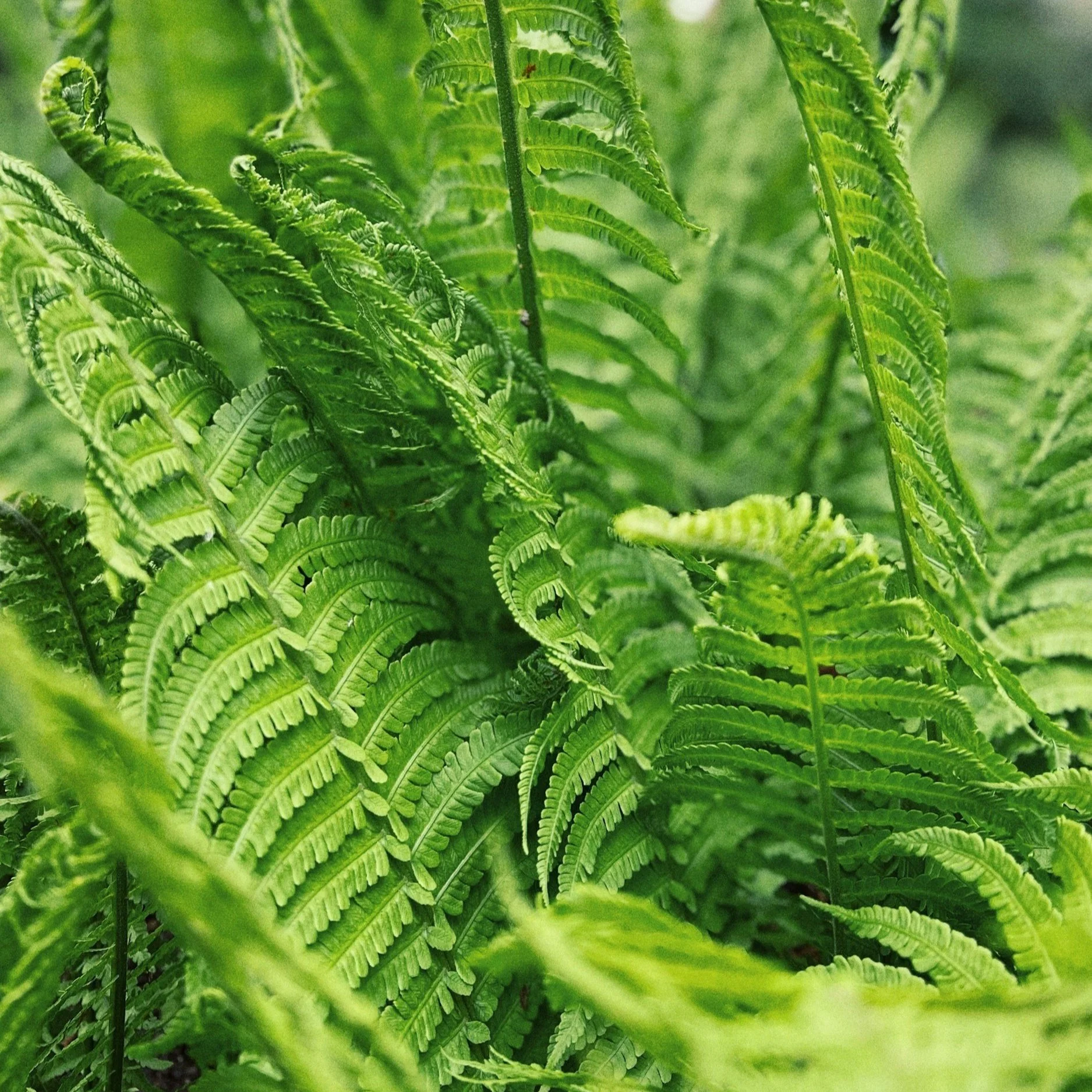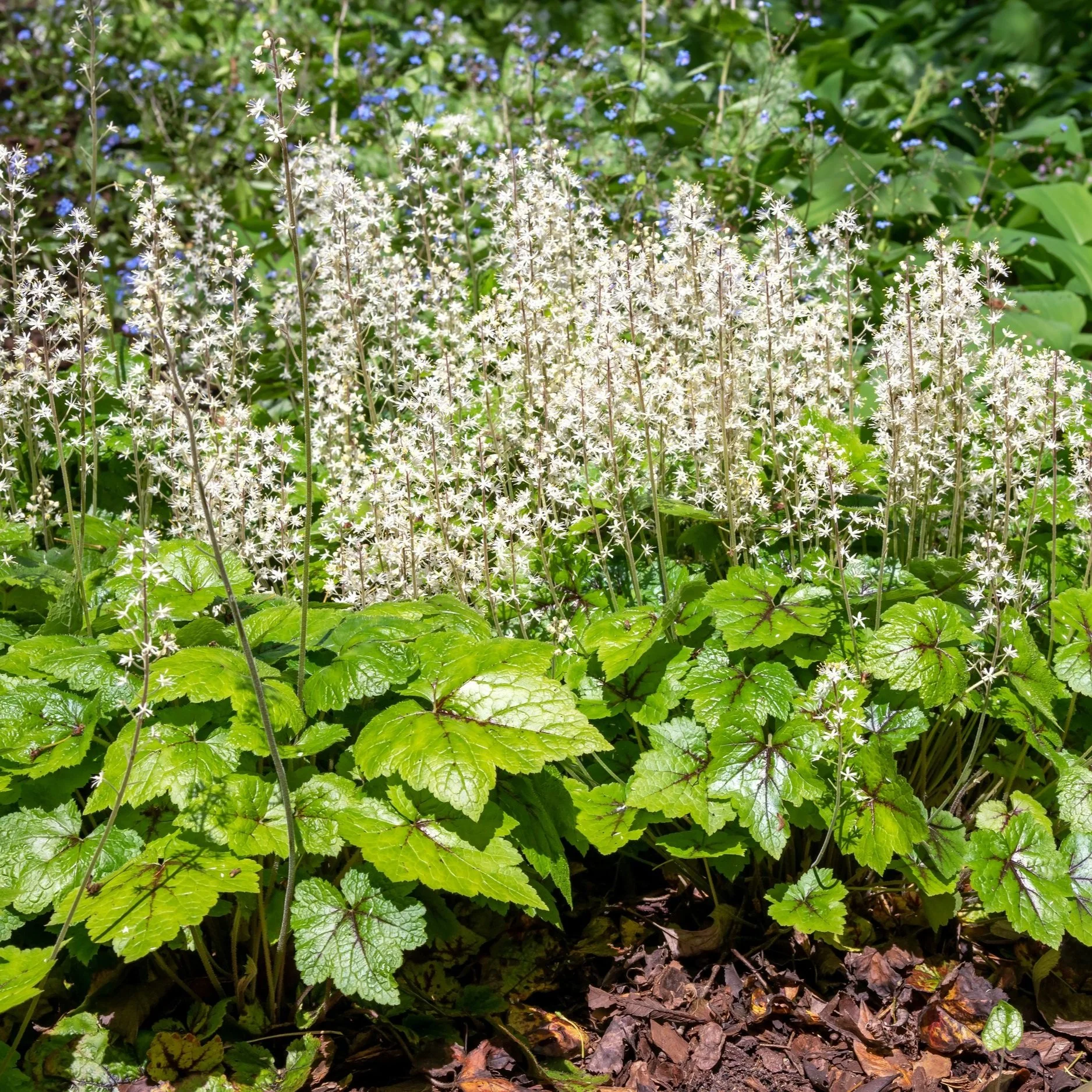Feathers of the Forest
Feathery fronds which resemble ostrich plumes.
We are currently designing several woodland sites for an 18th-century farmhouse in Whitpain, Pennsylvania. The owner has a deep appreciation for Ostrich Fern (Matteuccia struthiopteris), which will be prominently featured alongside other shade-loving woodland plants.
In crafting this historic landscape, we delved into the cultural and ecological significance of the Ostrich Fern in Pennsylvania. This fern thrives in the moist, nutrient-rich soils along streams and floodplains, especially within the Appalachian and Allegheny regions. It has been an important native species for centuries. Indigenous tribes like the Lenape harvested the young coiled fronds—known as fiddleheads—as a vital early spring food source, rich in nutrients after harsh winters. Early European settlers embraced this practice, weaving it into their local food traditions.
Our design in Whitpain thoughtfully pairs Ostrich Fern with complementary native woodland species such as Wood Fern, Christmas Fern, Woodland Phlox, Foam Flower, and Canadian Ginger, creating an ecologically balanced and historically resonant landscape.
Wood Fern add structure to a woodland garden.
Ostrich Fern.
Foam Flower forms a delicate semi-evergreen ground cover.
Our design for woodland plantings professionally installed in Lawrenceville, NJ.





